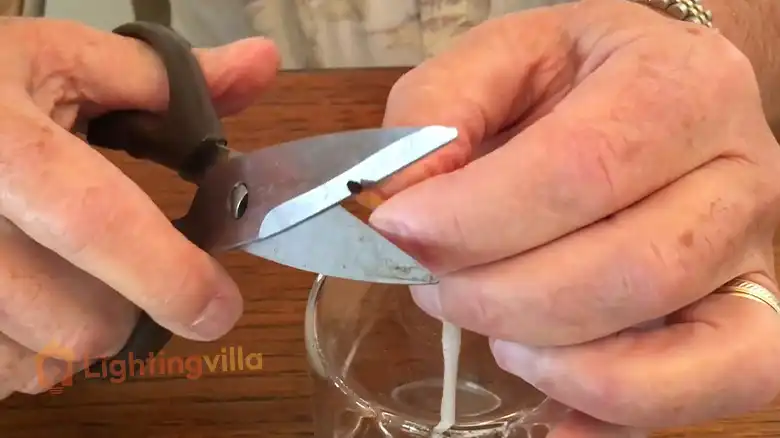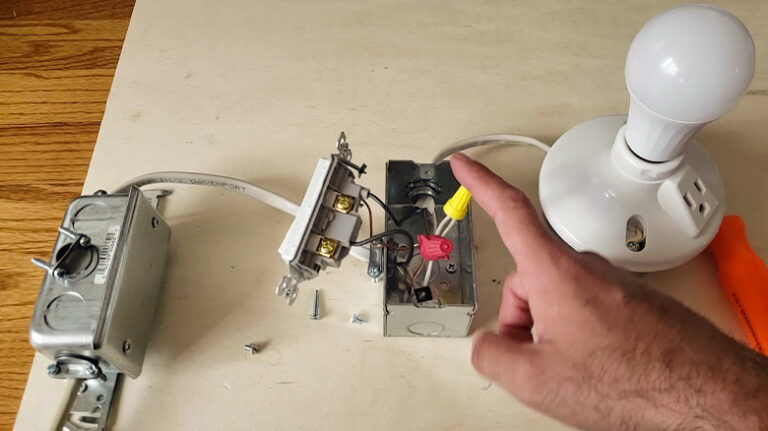How to Trim a Wick Oil Lamp | Adjust the Wick with Accuracy
Trimming the wick is crucial if you have an oil lamp. The form of the flame produced by your oil lamp depends on how you trim the wick. Additionally, maintaining an oil lamp properly includes cutting the wick. So let’s examine how to trim an oil lamp’s wick.

You may use sharp scissors to adjust the wick of the lamp. The wick may be trimmed in various ways, including straight across, in the shape of an oval, or in a pointy shape, but if you want the strongest blaze, you must trim it in a pointy shape. To understand more about trimming the wick, how to do it, and other relevant issues, read the article through to the conclusion.
Why Trimming The Wick Of An Oil Lamp?
Oil lamps were the common light option used in many homes before the invention of electric lighting. Y Until you could have seen members of the family, particularly the curious youngster in the home, practicing his art of trimming the oil lamp wicks in preparation for the evening.
So why is it required to trim the wicks of oil lamps? If you start with the fundamentals, an oil lamp has a fuel chamber where fuel is located. Then there are the chimneys, the wick, and the burners. When you ignite an oil lamp, the wick pulls gasoline from the cylinder and burns the oil, causing the flame to be seen. Combustion occurs when fuel is blazing, and a flame is created.
The problem is that the combustion that forms a layer of black carbon on the wick’s tip after each use is a byproduct of this combustion. If you use the oil lamp every day, cutting the wicks is a regular part of maintaining the oil lamp as a whole. You can guarantee your wick’s best performance by trimming it.
History of Lamp Trimming
A specialty post called “lamp trimmer” was responsible for maintaining oil lights on board ships.
A ship at sea required crew members to maintain the lights regularly in the times when they produced the light by burning oil in lamps. This care entailed cutting the wick that pulled the oil up from the storage tank to maintain a clear and brilliant flame. Lamp trimmers also replaced the oil reservoirs, which had just enough oil to keep the lamps burning for several hours but not enough to cause a large fire if they were dropped or otherwise damaged.
Since lamps were the main lighting source below decks, the number of lamp trimmers grew substantially as ships got bigger. Because the job of lantern trimmer was so deeply ingrained in maritime culture, electricians continued to be referred to as lamp trimmers for many years after they had entirely replaced oil lights. Being a professional lamp trimmer required the skill to trim a wick enough to burn uniformly, without hot spots, and would not require further attention for a while.
A wick that hasn’t been properly trimmed produces a dull, smokey flame. A wick that has been correctly trimmed should have a rounded end or resemble a wedge. When ignited, the wick should produce a clear flame that reaches its maximum height. The flame must be even, not ragged, and at minimum as wide as the candle.
How to Trim a Wick Oil Lamp?
Kerosene lanterns are excellent for camping, offer superb emergency illumination during a power failure, and cast a romantic, nostalgic glow. The lamp will continue to burn safely if you know how to operate it correctly. Use only kerosene or lamp oil, and fill the tank so that the oil is half an inch or less below the lamp’s neck. Round or flat wicks are used in kerosene lamps. The lamp’s flame depends on how well you can trim a flat wick.
As you would while cutting a fingernail, shape a wick for a level flame. Using a pair of scissors, cut the top flat and give the ends a little bend. Burn the wick until it produces a 1/8- to 1/2-inch-tall flame. The wick will be able to burn slowly and produce decent light as a result.
In order to achieve a peaked flame, you should cut the wick to the shape of a cone. In case you wish to have a double flame, split the wick between two pieces. Make sure that the flames do not exceed 3/4 inches in height and that they are pointed.
The wick’s top should be rounded off to form a crowned flame. Additionally, it should only burn up to 3/4 inches high.
If it begins to emit smoke or soot, gradually lower the wick. Shorten it until no more smoke or soot is visible.
Trim the wick again if it burns. You may extinguish the flame by placing one hand behind the top of the chimney and blowing towards the bottom of the palm. Avoid contacting the hot chimney. Hold off until the glass reaches room temperature. Trim the wick to a not burnt piece, take out the chimney, and make the necessary adjustments.
How Long Should the Wick Be?
Knowing how long of a wick you ought to have for the oil lamp is crucial when talking about cutting the wicks of the oil lamps.
Generally speaking, an oil lamp’s wick must be 8 inches long since a part of it will be taking space in other elements of the lamp. It is better to have much wick than not enough since a wick that cannot get to the oil would dry out and go out on its own.
An 8-inch wick can typically burn through 15 gallons of lamp oil, enough to light the wick continuously for up to 320 days. Any kerosene lantern or lamp will typically have a wick that is 6 inches or less from the surface of the oil. So, the wick’s suggested length is typically 8 inches, but you can reduce it to fit your needs if necessary.
Frequently Asked Questions
Why do you trim the wick on an oil lamp?
A ship at sea required crew members to maintain the lights regularly in the times when they produced the light by burning oil in lamps. This care entailed cutting the wick that pulled the oil up from the tank to maintain a clear and brilliant flame.
When should I trim my oil lamp wick?
A trimmed candle wick makes it easier to manage the flame height. A candle with an excessively large flame may burn too hot, endangering you, your surroundings, and the candle itself. Additionally, it will produce black soot, which is not cute.
Conclusion
So, to sum it up, use a set of sharp scissors or a wick-cutter to cut the oil wick to the desired length.
If you scroll up to this page without reading the previous paragraph, go back and do so. We previously described the forms in which you may cut the wick. And if you followed this instruction on its whole, we are confident that you already have a thorough understanding of how to trim the wick. Right? That’s all, then. Thanks.






